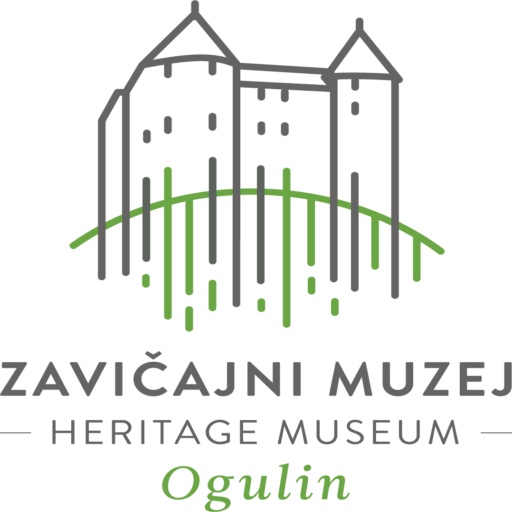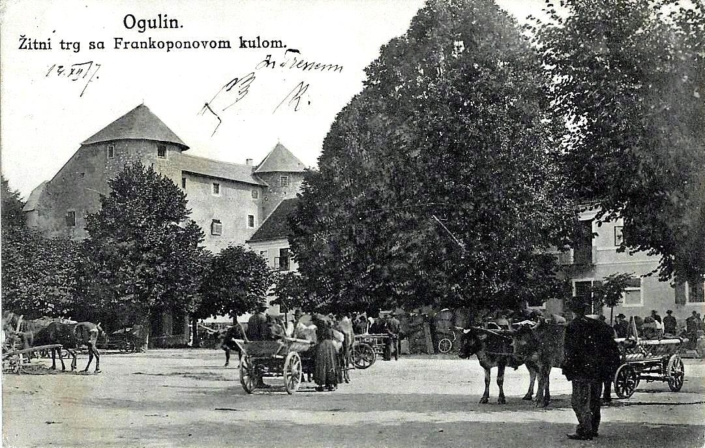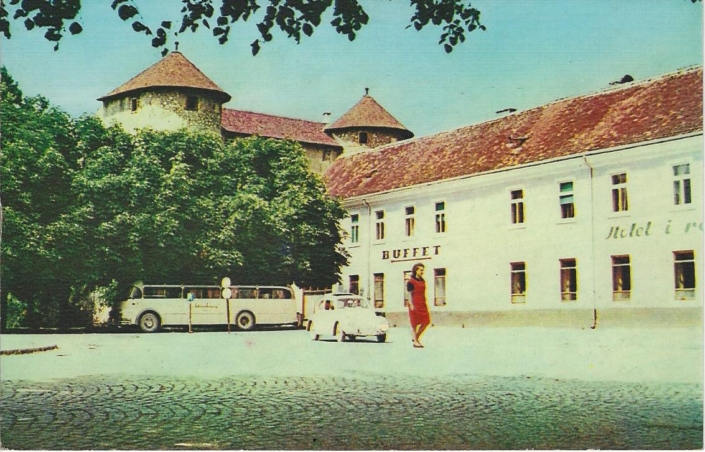Frankopanski kaštel, odnosno Stari grad Ogulin, nastao je oko 1500. godine nad liticom kanjona rijeke Dobre. Dao ga je sagraditi Bernardin Frankopan, jedan od najmoćnijih velikaša svog doba u Hrvatskoj, kao jedno u nizu utvrđenja za obranu od Turaka. Nakon gradnje, zbog čestih Osmanlijskih provala, iz obližnjih se mjesta doselilo nekoliko obitelji koje su tik uz utvrdu sagradile drvene kućice. Tako je već u prvoj polovici 16. stoljeća nastalo ogulinsko trgovište.
Sredinom 16. stoljeća kaštel zaposjeda kraljevska krajiška posada, te je sve do razvojačenja Vojne krajine u drugoj polovici 19. stoljeća bio u rukama vojske. Izgubivši fortifikacijsku ulogu 1865. pretvoren je u zatvor Sudbenog Stola.
Od 1967. godine u kaštelu je smješten Zavičajni muzej Ogulin, a Stari grad Ogulin upisan je na listu zaštićenih kulturnih dobara Republike Hrvatske.
Današnji Trg hrvatskih rodoljuba ispred Starog grada Ogulina u prošlosti je služio za trgovanje pa je nazvan „Žitnim trgom“.
Na najranijim sačuvanim krajiškim planovima u 17. stoljeću, prostor današnjeg trga je mjesto na kojem se od gradskih vrata odvajaju dvije najvažnije ogulinske prometnice. Već od 17. stoljeća srijeda se spominje kao sajmeni dan što je ostala do danas. Tržnica je sve do preseljenja u Kovačićevu ulicu bila na trgu. Nakon toga plohu trga zauzima Autobusni kolodvor koji je tu bio smješten gotovo do 2000. godine.
[ENG]
The Frankopan castle, i.e. the Old Town of Ogulin, was built around the year 1500 above the cliff of the canyon of the river Dobra. It was built by Bernardin Frankopan, one of the most powerful nobles of his time in Croatia, as one in a series of fortifications for defense against the Ottomans. After it was raised, and due to frequent Ottoman attacks, several families moved there from nearby settlements and built wooden houses next to the fortress. Thus the Ogulin market town was established already in the first half of the 16th century.
In the middle of the 16th century, the castle was occupied by the royal Krajina garrison, and it was in the hands of the army until the demobilization of the Military Frontier (Vojna krajina) in the second half of the 19th century. Having lost its fortification role in 1865, it was turned into the Prison of the Court of Trade.
Ogulin Heritage Museum has been located in the castle since 1967, and the Old Town of Ogulin has been registered in the list of protected cultural assets of the Republic of Croatia.
Today’s Trg hrvatskih rodoljuba (Croatian Patriots Square) in front of the Old Town of Ogulin used to be used for trade, so it was named “Žitni trg” (Grain Square).
In the earliest preserved Krajina plans in the 17th century, the area of today’s square was the place where the two most important Ogulin roads branched off from the city gates. Since the 17th century, Wednesday has been mentioned as market day and it has remained that to this day. The market was on the square until it was moved to Kovačićeva Street. After that, the area of the square was occupied by the Bus Station, which was located there until almost 2000.





